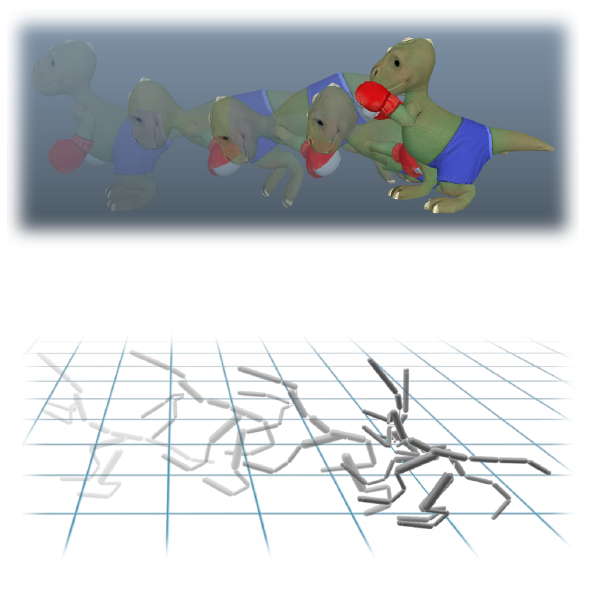Abstract

The vision of fully simulating characters and their environments has the potential to offer rich interactions between characters and objects in the virtual world. However, this introduces a challenging problem similar to controlling robotic figures: computing the necessary torques to perform a given task. In this paper, we address the problem of transferring hand-crafted kinematic motions to a fully simulated figure, by computing open-loop controls necessary to reproduce the target motion. One key ingredient to successful control is the mechanical feasibility of the target motion. While several methods have been successful at replicating human captured motion, there has not yet been a method capable of handling the case of artist-authored key-framed movements that can violate the laws of physics or go beyond the mechanical limits of the character. Due to the curse of dimensionality, sampling-based optimization methods typically restrict the search to a narrow band which limits exploration of feasible motions—resulting in a failure to reproduce the desired motion when a large deviation is required. In this paper, we solve this problem by combining a window-based breakdown of the controls on the temporal dimension, together with a global wide search strategy that keeps locally sub-optimal samples throughout the optimization.
Additional Content
Copyright Notice
The documents contained in these directories are included by the contributing authors as a means to ensure timely dissemination of scholarly and technical work on a non-commercial basis. Copyright and all rights therein are maintained by the authors or by other copyright holders, notwithstanding that they have offered their works here electronically. It is understood that all persons copying this information will adhere to the terms and constraints invoked by each author’s copyright. These works may not be reposted without the explicit permission of the copyright holder.